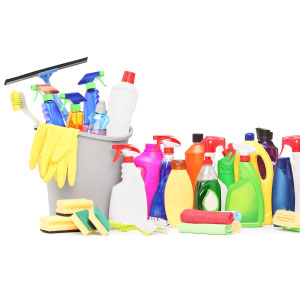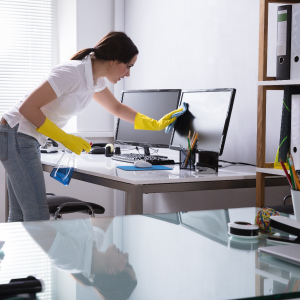You’d think, with all that soapy water sluicing about, your dishwasher would be clean by definition – and to some extent, it is. But, as evidenced by gritty residue on the crockery or smears on the glass, trapped detergent, food and limescale can and does slowly build up. Not to mention the unpleasant aromas that waft out if you’re not careful.
So, what’s to be done?
Well, you need supplies: detergent and rinse aid, soft cloth, soap and of course rubber gloves. You might also need a dedicated dishwasher cleaner and a soft brush. If things are really grim, you might a poking tool of some sort! And it’s well worth digging out your instruction manual.
To be fair, if you think that the majority of the cleaning time will actually be the dishwasher cycle itself, it’s not actually that onerous a job – depending on its state at the start.
The higher the water hardness in your area, the more detergent you’ll need but you can easily find that out through a quick internet search. You’ll probably find it worth investing in a rinse aid too if the water is hard.
Firstly, the filter. It may be relatively clean – or not – as trapped food, frequent use and hard water take their toll, especially if it’s been a while since you last checked. If the interior smells unpleasant or the dishes are not very clean, then that’s a big hint to investigate.
The likely design of your machine is that the filter is a cylinder within a flat mesh plate at the bottom. So, pull out the bottom rack and twist the cylinder until you can remove it. Check the space where it was and remove the inevitable debris from there at the same time as removing the big bits stuck on the filter. Then rinse the filter itself under a running tap using a bit of soap or washing-up liquid. You could even use a soft brush if it’s very blocked but be gentle as the mesh is relatively delicate.
When you’re satisfied, reinsert the filter properly into the machine then get a damp cloth and with a bit of washing up liquid, wipe the gasket all around the door. While you’re at it, wipe the exterior of the dishwasher – treating it to a dedicated product if you want to.
Having dealt with the filter, it’s time to deal with any residue build-up on the hidden parts, walls and racks of the machine. Obviously, you won’t be able to see most of it so you can either use a specific shop-bought dishwasher cleaner – following its instructions carefully, or even white vinegar. It’s usually recommended that you run a hot cycle through an empty machine.
At this point you should have a lovely, clean machine, but if there are still any problems, check for blockages in the spray arms or the sump in case some food or other residue is stuck.
If you can’t lay your hand on the manual, you can sometimes find help online.







